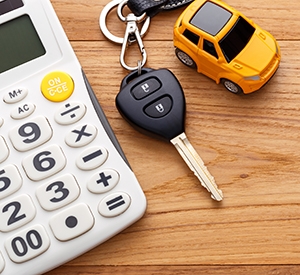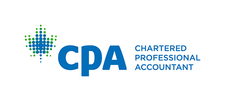TAXATION
Operating an automobile for business and personal use has tax consequences.
Purchasing or leasing an automobile in the company name and allowing employees to drive the automobile has tax consequences that may require owner-managers to add a taxable benefit to the employee’s T4.
CRA Definition of Automobile
For there to be a taxable benefit, the employer must first determine whether the vehicle is an automobile under the Income Tax Act. The Canada Revenue Agency (CRA) defines an automobile as “a motor vehicle that is designed or adapted mainly to carry individuals on highways and streets and has a seating capacity of not more than the driver and 8 passengers.”
This definition of an automobile [paraphrased from 248(1) from the Income Tax Act] does not include “a van, pick-up truck, or similar vehicle” that:
- can seat no more than the driver and two passengers, and in the year it is acquired or leased is used primarily to transport goods or equipment in the course of business, or
- in the year it is acquired or leased, is used 90% or more of the distance driven to transport goods, equipment, or passengers in the course of business; or
- pick-up trucks that you bought or leased in the tax year that:
a) you used primarily to transport goods, equipment, or passengers in the course of earning or producing income
b) you used at a remote work location or at a special work site that is at least 30 kilometres away from any community having a population of at least 40,000.
Restrictions on Deductibility
Vehicles that fall within this definition of an “automobile” are subject to a maximum capital cost allowance addition (available for future capital cost allowance) of $30,000 plus HST. This limitation imposes a significant constraint on many business owners’ primary motivation for purchasing the vehicle in the corporate name. Vehicles such as king cab trucks that do not fall within the definition of “automobile” are not subject to such a restriction since they are considered necessary for the business and are not considered “luxury vehicles”. There are also restrictions imposed on leased automobiles. Generally, monthly lease costs for automobiles are restricted to $800 plus HST.
Taxable Benefits
In addition to the restrictions on the deductibility of annual depreciation (or leasing costs), users of such vehicles are also deemed to have received a taxable benefit from the corporation for the use of the vehicles for non-business purposes.
For example, assume an owner-manager purchases a high-end SUV in the company name but the owner-manager’s spouse uses it primarily (i.e., more than 50% of the use) for non-business purposes. Assume also that the base price of this vehicle is $90,000 and the overall cost of owning the vehicle, once HST is added, is $101,700. The standby charge to the employee is calculated at 2% per month of the total cost of the vehicle. Thus, the standby charge for the employee is calculated at $101,700 at 2% ($2,034) per month or $24,408 per year. The standby charges would be reduced in cases where the vehicle is used primarily for business purposes and annual personal driving does not exceed 20,000 kilometres.
On top of the standby charge, an additional operating benefit of 26 cents per personal kilometre driven is taxable in the hands of the employee. In the case where the vehicle is primarily used for business purposes, the operating benefits could be reduced to 50% of the standby charges if the benefit results in an amount lower than otherwise calculated.
(Standby charges for a lease can be expensive as well. A monthly lease cost of $1,350 over 84 months creates a standby charge for 12 months of $10,800 plus an operating expense benefit as mentioned above.)
Owner-Manager’s Use of Vehicles
Owner-managers may believe they are not subject to the available-for-use rules because they are shareholders of the corporation and not employees. The CRA has made it clear that owner-managers are subject to the same taxable benefit as employees as indicated by the CRA’s reference to archived IT63R5 Benefits, Including Standby Charge for an Automobile, from the Personal Use of a Motor Vehicle Supplied by an Employer — After 1992.
Paragraph 18 reads as follows:
Shareholder Benefit
18. The above guidelines may generally be applied to a shareholder of a corporation. Subsection 15(5) provides that, for the purpose of subsection 15(1), the value of the benefit to be included in a shareholder’s income when an automobile is made available to such a person (or to a person related to that person) by a corporation, whether or not resident or carrying on business in Canada, is calculated on the assumption that subsections 6(1), (1.1) and (2) apply with such modifications as are required in the circumstances, and as though the references therein to “employer” were read as references to “corporation.”
Working from Personal Residence
Many owner-managers may work from their principal residence and thus have access to the vehicle 24 hours a day. The question is: “Does the close proximity of the vehicle mean that it is available for personal use and therefore a taxable benefit must be added to the owner-manager’s income at the end of the year?”
CRA: There is no taxable benefit if the automobile is operated for business use only.
Taxable Benefits
“An automobile is available to your employee if he or she has access to or control over the vehicle. It includes any part of the day, weekends and holidays during the calendar year.” (This suggests that, since the vehicle is parked at the place of residence and is available 24 hours a day — 365 days a year, there is a taxable benefit.)
“If your employee does not use the company’s automobile for any personal driving, there is no taxable benefit, even if the automobile is available to your employee for the entire year. This applies as long as the kilometres driven by your employee are in the course of his or her employment duties and the vehicle is returned to your (business) premises at the end of his or her work day.” (This suggests that, if the owner-manager can establish that they do not use the vehicle for personal use at all and park it at the “corporation’s” premises [also the owner-manager’s principal residence] then there may not be a taxable benefit.)
Keep Detailed Records
Convincing taxation authorities that the vehicle is not used for personal use will require due diligence and good record keeping since the CRA will take into consideration many factors when determining whether available-for-use benefits should be added to income.
The first line of defence is a complete log book. Record the odometer reading as at January 1 of and December 31 of each calendar year to establish the total annual distance the vehicle has been driven. Log each business trip taken plus a description of the purpose. Hypothetically, the number of kilometres driven for business trips and the total kilometres driven should be the same.
Although it is highly unlikely an owner-manager would purchase or lease an expensive “toy” and use it primarily for work purposes, the CRA may start to review the purchase of vehicles to ensure they are indeed “work vehicles.” Additional calculations and circumstances will alter the available-for-use add-on, whether for a purchased or leased vehicle. But, as our hypothetical taxable benefit examples demonstrate, the additional taxable benefit will push the employee (i.e., owner-manager) into a higher tax bracket and thus bring closer scrutiny by the CRA.
Consult Your CPA
Calculation of available-for-use benefits is complicated and may be somewhat offset by taxable deductions within the corporation. If your business is considering purchasing or leasing a vehicle that will be operated in the gray area between business and personal use, consult your CPA to ensure you understand the potential personal tax consequences.
Contact Argento CPA today!
Source: BUSINESS MATTERS
Disclaimer: BUSINESS MATTERS deals with a number of complex issues in a concise manner; it is recommended that accounting, legal or other appropriate professional advice should be sought before acting upon any of the information contained therein.
Although every reasonable effort has been made to ensure the accuracy of the information contained in this letter, no individual or organization involved in either the preparation or distribution of this letter accepts any contractual, tortious, or any other form of liability for its contents or for any consequences arising from its use.
BUSINESS MATTERS is prepared bimonthly by the Chartered Professional Accountants of Canada for the clients of its members.
Richard Fulcher, CPA, CA – Author; Patricia Adamson, M.A., M.I.St. – CPA Canada Editor.
Contact us: patricia@adamsonwriters.ca


